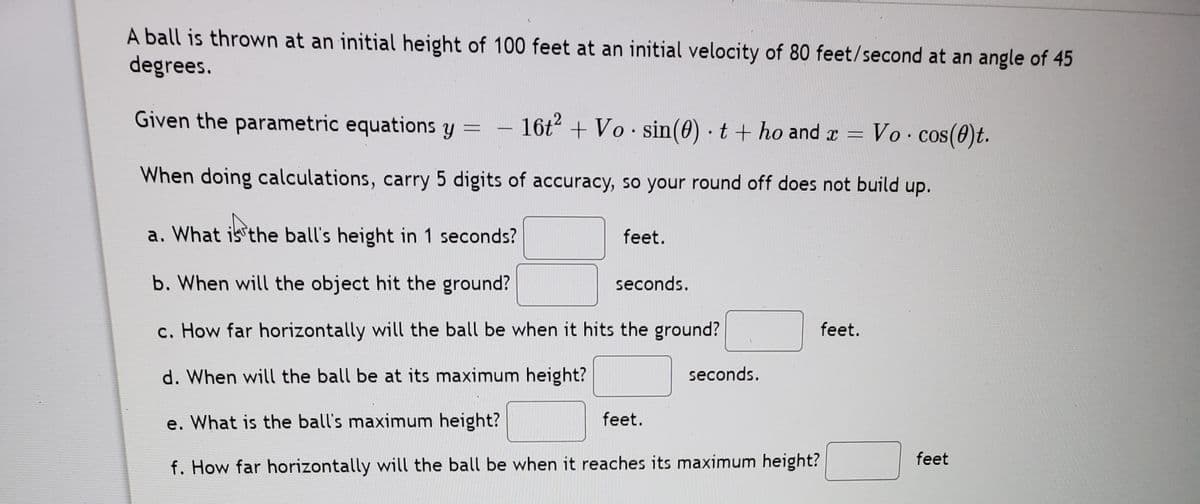A ball is thrown at an initial height of 100 feet at an initial velocity of 80 feet/second at an angle of 45 degrees. Given the parametric equations y = - 16t + Vo sin(0) t + ho and z = Vo cos(0)t. When doing calculations, carry 5 digits of accuracy, so your round off does not build up. a. What is the ball's height in 1 seconds? feet. b. When will the object hit the ground? seconds. c. How far horizontally will the ball be when it hits the ground? feet. d. When will the ball be at its maximum height? seconds. e. What is the ball's maximum height? feet. feet f. How far horizontally will the ball be when it reaches its maximum height?
Displacement, Velocity and Acceleration
In classical mechanics, kinematics deals with the motion of a particle. It deals only with the position, velocity, acceleration, and displacement of a particle. It has no concern about the source of motion.
Linear Displacement
The term "displacement" refers to when something shifts away from its original "location," and "linear" refers to a straight line. As a result, “Linear Displacement” can be described as the movement of an object in a straight line along a single axis, for example, from side to side or up and down. Non-contact sensors such as LVDTs and other linear location sensors can calculate linear displacement. Non-contact sensors such as LVDTs and other linear location sensors can calculate linear displacement. Linear displacement is usually measured in millimeters or inches and may be positive or negative.

Step by step
Solved in 2 steps with 2 images







